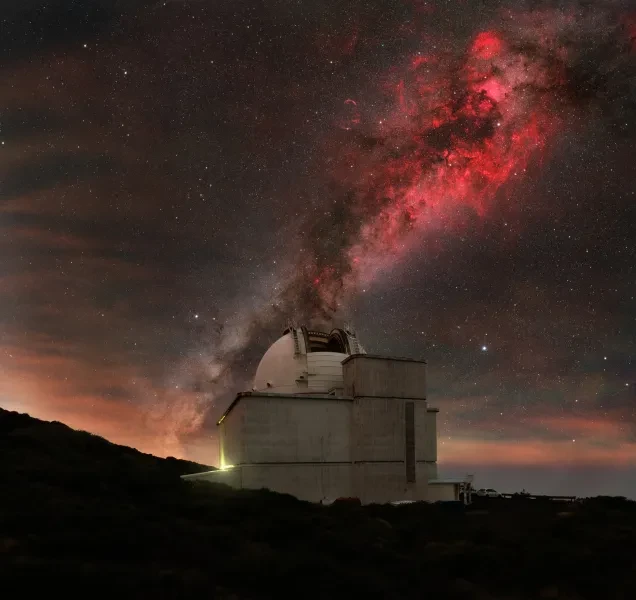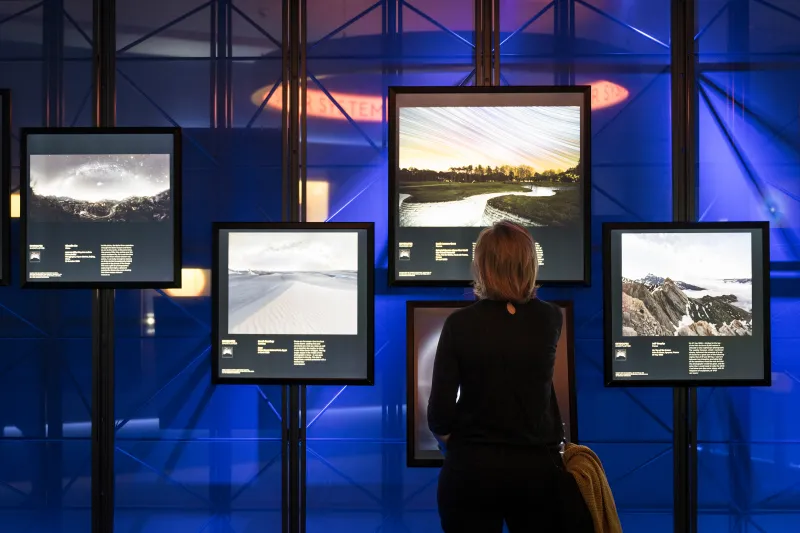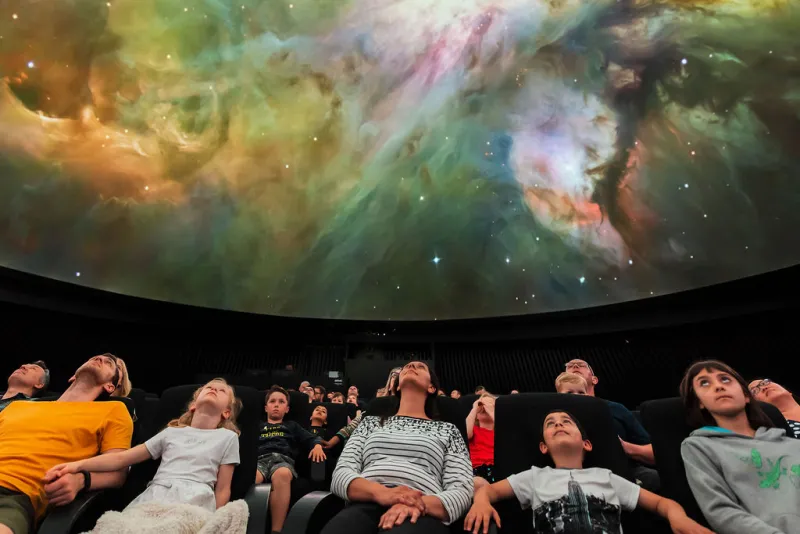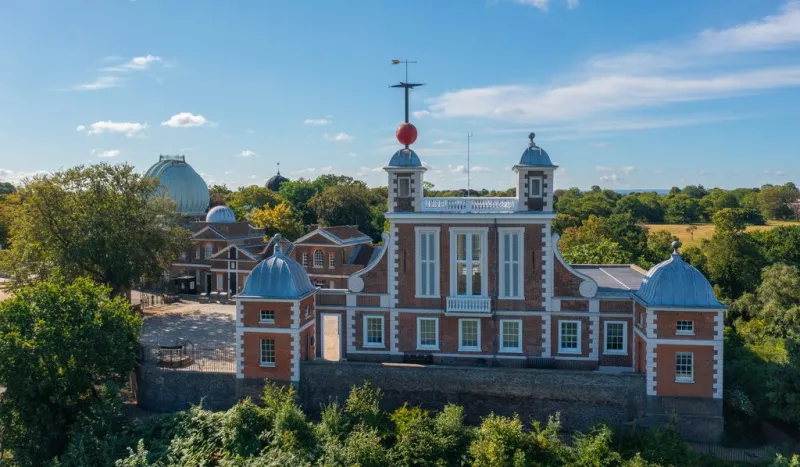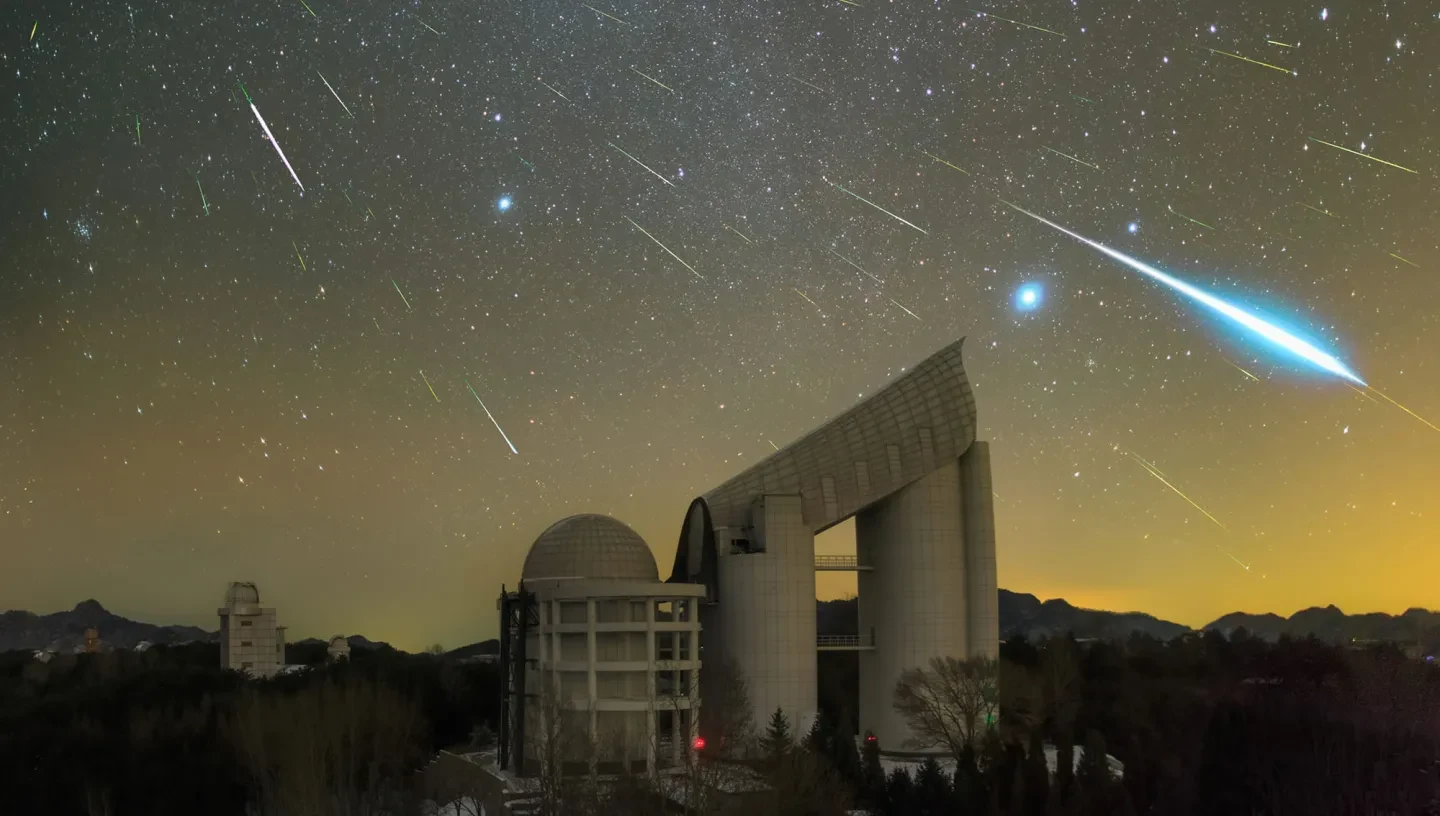
Find out what to see in the night sky this December, including not one, but two meteor showers!
By Max, Work Experience Student
Top 3 things to see in the night sky in December 2024:
- 14 - 15 December – The much-awaited Geminid meteor shower peaks
- 21 December – Get cosy for the winter solstice
- 23 December - Round off 2024 with the peak of the Ursid meteor shower
Details given are for London and may vary for other parts of the UK.
Look Up! Podcast
Subscribe and listen to the Royal Observatory Greenwich's podcast Look Up! Our astronomers Imo and Jess talk through some of this month’s must-see cosmic objects and discuss two space news stories: the nature of the Large Magellanic Cloud, and the Starship test launches.
The Geminid meteor shower
For the first item on our list, we have the Geminid meteor shower! This is one of the most active and possibly best meteor showers of the year and is known for its beautiful streaks, caused by particles that are as small as a grain of sand.
It’s best to see the Geminids whenever the shower's radiant point, in the Northern Hemisphere the constellation of Gemini, is above the horizon. The Geminid meteor shower will be active from 4 December to 20 December, producing its peak rate of up to 150 meteors per hour around 14 – 15 December.
These showers are visible to the naked eye, so you do not need a telescope for this. Meteors can appear from any part of the sky in the UK but we advise that you not only try to find a wide open space away from light pollution, like street lights, but also to look just to the side of the radiant point to see more meteors.
The Ursid meteor shower
You’ll be delighted to find that we have a second meteor shower in December! Unlike the Geminids, the radiant of the Ursid meteor shower will remain above the horizon in the constellation Ursa Minor, a small but bright northern constellation which is home to Polaris, the pole star. Ursa Minor can be found north of its much larger parent constellation, Ursa Major. Like the Geminids, you also won’t need a telescope for this one.
The shower will be active from 17 December to 26 December and is expected to reach peak activity and produce its best display of meteors on 23 December. It is best seen when the radiant is highest in the sky, which will be just before dawn.
Astronomical winter begins
Moving on to a more seasonal event, we also have the winter solstice coming up - or December solstice, or southern solstice, it depends who you ask really. It takes place on 21 December and will be the shortest day in 2024 in the Northern Hemisphere, with only 7 hours and 49 minutes of sunlight.
This is the day when the Sun takes the shortest path across the sky on its annual journey through the constellations of the zodiac and reaches its most southerly point in the sky, resulting in it being the day with the least sunlight and therefore, the longest night. This day is also counted by astronomers to be the first day of winter in the Northern Hemisphere.
In the Southern Hemisphere, however, it's the summer solstice, which is astronomically the first day of summer. Sadly there won't be much time to view the night sky for Southern Hemisphere observers. One thing’s for certain though; people in the Northern Hemisphere will be able to get a lot of shut-eye or stargazing done on 21 December.
Come along to Greenwich Park on 21 December for the Royal Observatory's Winter Solstice Festival, with live performances, craft markets, live science demos and opportunities to look through a telescope with our astronomers.
Wrapping up the year with a new moon
On 30 December, just a day before New Year’s Eve, the Moon will enter into its new moon phase in its cycle. In this phase, the Moon appears closest to the Sun and rises and sets with the Sun. This means the Earth, Moon and Sun all lie in a roughly straight line, with the Moon in the middle.
In this configuration, we see almost exactly the opposite half of the Moon to that which is illuminated by the Sun, making it essentially invisible because the side we see is not illuminated. That means it’s only visible during daytime instead of at night time, although in practice it’s hard to see for a few days as it’s obscured by the Sun’s rays.
Also a side note; if you do try to look for the Moon with a telescope or binoculars to see if I was right or not, please refrain from pointing your telescope or binoculars into the Sun. Doing so can result in damage to your eyes!
The Moon's phases in December 2024
New Moon: 1 December (06:22)
First Quarter: 8 December (15:27)
Full Moon: 15 December (09:02)
Last Quarter: 22 December (22:18)
New Moon: 30 December (22:27)
This new moon is sometimes known as a 'black moon', as it is the second new moon in a calendar month.
Stargazing Tips
- When looking at faint objects such as stars, nebulae, the Milky Way and other galaxies it is important to allow your eyes to adapt to the dark so that you can achieve better night vision.
- Allow 15 minutes for your eyes to become sensitive in the dark and remember not to look at your mobile phone or any other bright device when stargazing.
- If you're using a star app on your phone, switch on the red night vision mode.
You may also be interested in
Header image: Geminids over the LAMOST Telescope © Yu Jun | Shortlisted in Shortlisted in Astronomy Photographer of the Year 8





